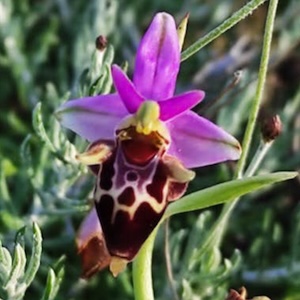Art, AI, strategies of biomimicry: mimiphenia, the ambivalent mimicry

Accepted: December 4, 2024
HTML: 110
All claims expressed in this article are solely those of the authors and do not necessarily represent those of their affiliated organizations, or those of the publisher, the editors and the reviewers. Any product that may be evaluated in this article or claim that may be made by its manufacturer is not guaranteed or endorsed by the publisher.
This paper examines interactions between animal and human patterns of biomimetics to state that ‘all art is biomimicry’ on the basis of information exchanges. Similarities between biomimicry, Art, and AI are methodologically apparent; advances in AI self-coding computation might be reconsidered alongside artistic interpretations of evolutionary patterns in animals. Purposefully misleading signals, blended with more accurate or comprehensible ones, intertwine the web of mimetics. In these treacherous artistic, adaptive, or coding processes, conjecture states emerge, questioning the precision of signal conception. ‘Apophenia’ is defined as the tendency to perceive a connection or meaningful pattern between unrelated or random things (such as objects or ideas), while ‘pareidolia’ as the “tendency to perceive a specific, often meaningful image in a random or ambiguous visual pattern” (https://www.merriam-webster.com/). ‘Mimiphenia’ is a neologism we propose as a paraphrase of apophenia and pareidolia, terms related to perception. This ‘apparent-ambiguous’ mimicry imposes on viewers and predators a half-aware state, an artistic dilemma. By observing this phenomenon in Ophrys orchids, we propose new hypothetical bee-resembling patterns by applying Turing's morphogenetic formula to a parent orchid using AI. The resulting patterns closely resemble those evolutionarily occurring in nature.
How to Cite

This work is licensed under a Creative Commons Attribution-NonCommercial 4.0 International License.
Copyright (c) 2025 The Author(s)
PAGEPress has chosen to apply the Creative Commons Attribution NonCommercial 4.0 International License (CC BY-NC 4.0) to all manuscripts to be published.

 https://doi.org/10.4081/peasa.47
https://doi.org/10.4081/peasa.47



